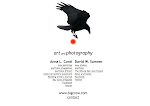 Last Tuesday when I phoned in an order to B&H, I was surprised to get hold of a rather chatty sales rep.
Last Tuesday when I phoned in an order to B&H, I was surprised to get hold of a rather chatty sales rep.When I added the usual sis rolls of Kodak BW400CN to my order he launched into a passionate plea for help in getting the word out that film is alive and well and for sale at B&H.
He said I couldn't imagine how many calls he's received from people all over the country who have been told by the people in their local camera shops that no one is manufacturing film any more. He said it's ridiculous, but it's happening: there are a lot of people who are being told and believe that Kodak and Fuji are no longer manufacturing film.
The sales rep implored me to spread the word, and insisted that a "grass-roots" movement is needed to counter this misinformation. He said half of every dollar Kodak makes is from the sale of film and that people need to know that.
I'm not certain of the actual figures, considering the diversity of Kodak's business, but I do know that film is still a profitable item for Kodak. Here's a quote from an e-mail I received from Kodak's PR department last February:
' A January 31, 2007 Kodak press release noted, "Film and Photofinishing Group earnings from operations were $77 million, compared with $51 million a year ago..." '
Another thing to consider is that both Kodak and Fuji recognize China and India as being two of the biggest markets for film products. There is still a considerable demand for film around the world. We sometimes lose sight of that here in the US.
I told the B&H guy I'd do my best to spread the word. Of course, when it comes to film, I tend to do just that every chance I get.
By the way, if you have never heard of Freestyle Photographic Supplies in Hollywood, CA. check them out www.freestylephoto.biz . They're really committed to silver.


